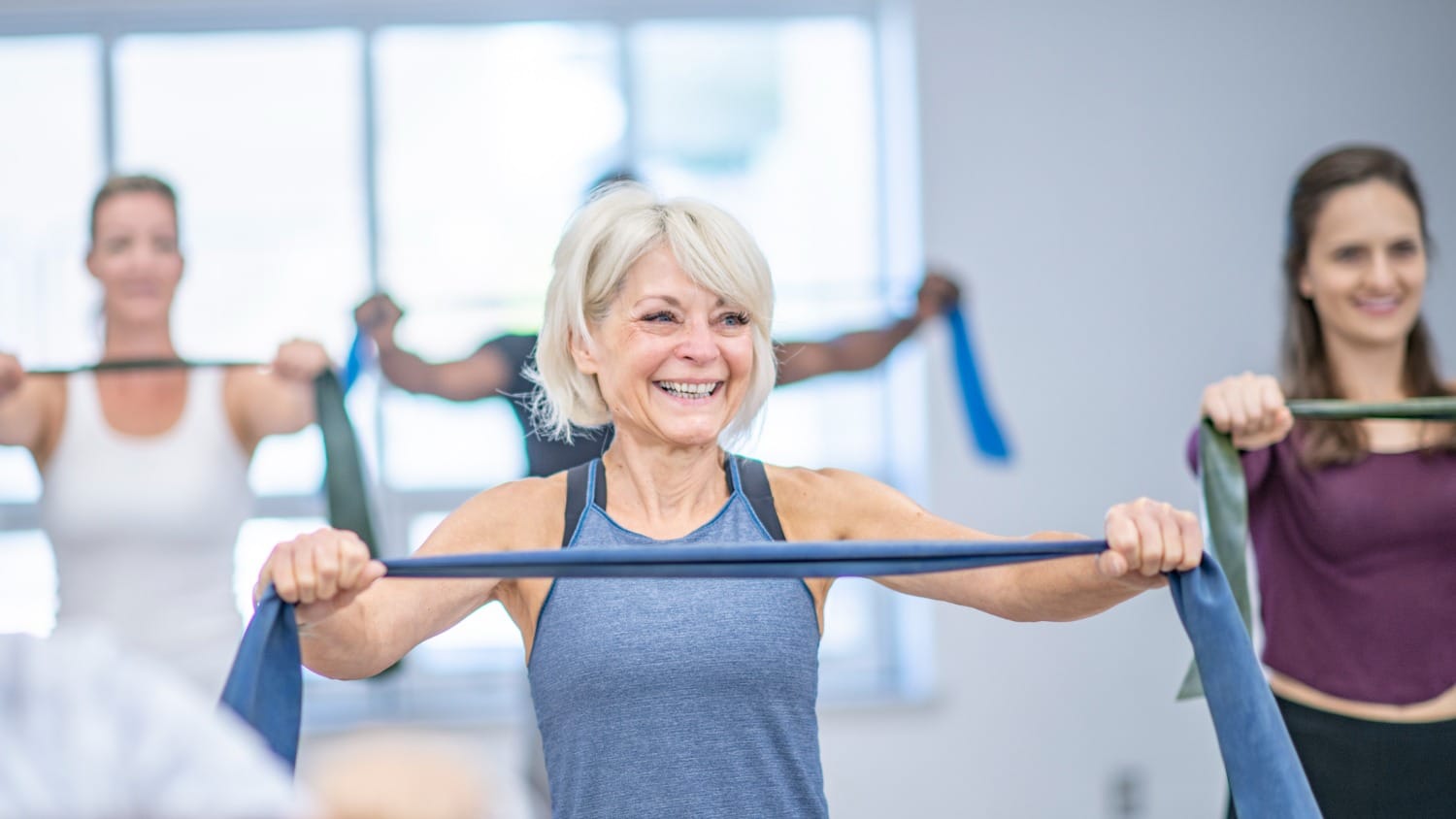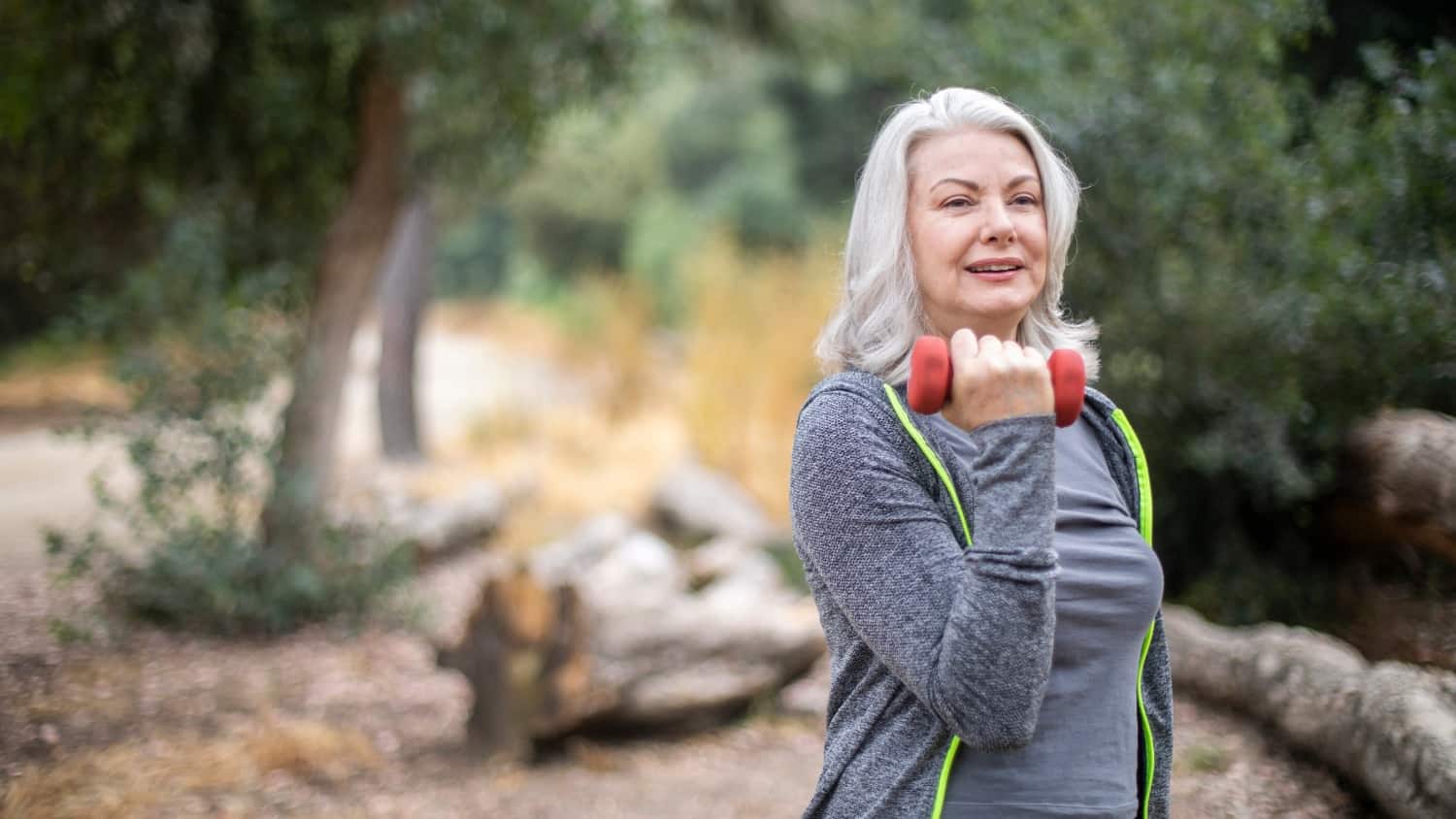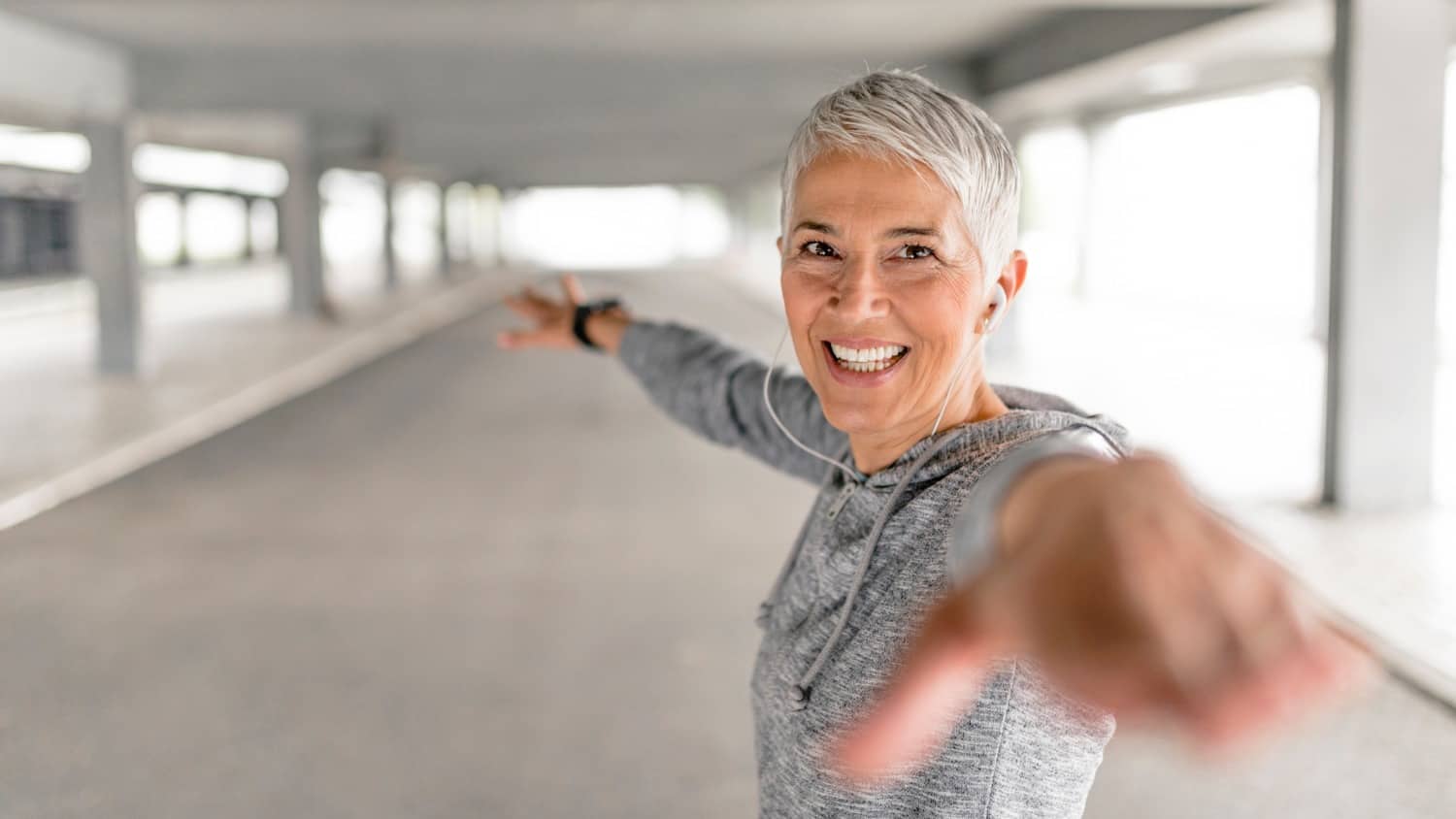
5 Wonderful Reasons and Ways to Keep Moving
I met an amazing older couple in the lounge at the airport in Hawaii once. The two were enjoying a beer in between flights and clearly having a fantastic time. They were lively, hilarious, and full of fun stories.

The couple was there with extended family to celebrate the man’s 90th birthday. I was blown away to learn this last part, as I would have guessed 80, at the very most. He was engaged and active and clearly capable of getting around wherever he chose. I asked him what his secret was to successful aging, and he pointed to his wife with a smile.
And she was 80! Not a single sign, in my brief experience with her, of being more than 65 or so. So I asked her what her secret was and her response has stuck with me.
Just. Keep. Moving.
I have it posted on the top of my To Do List for every day as a reminder. Slowing down is natural and perfectly okay, but stopping is not.

What Happens to Our Bodies as We Age?
Aging is associated with physiological changes that affect body composition, among other things. These changes include a decrease in muscle, a reduction in bone mineral density, and an increase in body fat. Some of it is natural, but much of it is the result of our choices in life.
Why Should You Focus on Lean Mass?
A lot of time and attention is spent focusing on fat, for a few rather important reasons. Cosmetically, it’s the most obvious component of body composition, one our society tends to fixate on it. Fat is also, obviously, a huge factor in weight management and chronic disease.
But the real focus, in my mostly biased opinion, should be on building and maintaining lean mass. Because it matters more. If you focus effectively on building lean mass, you will maintain your ability to function well into older age, protect your bones from becoming brittle, and gain a leg up on weight management and healthy aging. It’s a more positive approach to living in general.
A decrease in lean mass, the muscle, bone, organs, and other non-fat tissues in your body, leads to reduced strength, mobility, and functional capacity, making us more susceptible to falls and frailty. Additionally, the accumulation of visceral fat contributes to metabolic disturbances, insulin resistance, and chronic diseases like type 2 diabetes.

Why Lean Mass Matters More
One
Did you know that diet-induced weight loss is associated with a loss in muscle and bone mass as well? Sadly it’s true, but it’s also preventable. Eating healthy and moving more is the best way to reduce fat mass while maintaining or building lean mass. Be wary of diets or drugs that promote weight loss without attention to body composition.
Two
Lean mass plays a pivotal role in maintaining strength and physical function, particularly in older adults. Strong muscles are essential for performing daily activities, such as walking, climbing stairs, carrying groceries, or lifting objects.
By preserving or building lean mass, you can improve your functional strength and reduce the risk of falls, fractures, and other mobility-related issues that become more common with age. Preserving lean mass helps maintain independence and reduces the risk of disability.
Three
Lean mass is metabolically active, contributing to a higher resting metabolic rate and energy expenditure. Compared to fat, muscle tissue has a higher metabolic rate, which means it burns more calories at rest.
Increased muscle mass enhances insulin sensitivity, glucose metabolism, and lipid profiles, reducing the risk of metabolic disorders. Moreover, lean mass helps counteract age-related declines in metabolism and maintain a healthy body weight.
Four
Lean mass, particularly in the form of skeletal muscle, also plays a vital role in supporting bone health. Muscles exert mechanical stress on bones, stimulating bone growth and strength. Maintaining or improving this kind of lean mass helps reduce the risk of osteoporosis and fractures, which are prevalent in aging populations.
Five
Finally, higher lean mass is associated with a lower risk of various chronic conditions, including type 2 diabetes, cardiovascular disease, and metabolic syndrome. Additionally, maintaining lean mass can support a healthy immune system and improve overall resilience to illness and injury.

How to Preserve and Enhance Lean Mass
Resistance Training
Engaging in regular resistance training is the cornerstone for preserving and enhancing lean mass. Resistance exercises, such as weightlifting and resistance band workouts, stimulate muscle protein synthesis, leading to muscle growth and maintenance.
Both aerobic exercises and resistance training should be combined to optimize overall health benefits, but don’t neglect the critical muscle-building and bone strengthening benefits of resistance training.
Building muscle can be an enjoyable and rewarding process. It all depends on your attitude.
Weightlifting
Engaging in weightlifting or strength training exercises is one of the most effective ways to build muscle. It’s a versatile activity that lets you target specific muscle groups and progressively increase the weights as you get stronger.
Many people find weightlifting to be both challenging and satisfying as they see their strength and muscle mass increase over time. You are never too old to discover the joy of weightlifting, or how much fun it is to be strong.
Sports
Participating in sports that require strength and power can be another enjoyable way to build muscle. Sports like tennis, pickleball or swimming involve dynamic movements and can help develop muscle mass while providing an element of enjoyment as well.
Group Fitness Classes
Group fitness classes can also be a fun way to build muscle. These classes often incorporate a combination of strength training exercises and cardiovascular activities, providing a challenging and motivating environment.
Outdoor Activities
Activities like walking, hiking, kayaking, or paddle boarding can engage multiple muscle groups and promote muscle development while enjoying the outdoors. These activities offer a change of scenery and can make the process of building muscle more exciting.
Dance
Dance styles like ballet, hip-hop, or salsa involve intense movements that challenge your muscles. These activities can improve strength, coordination, and flexibility while providing an enjoyable and engaging experience.
Yoga and Pilates
While these activities are not primarily focused on muscle building, they can help improve muscle tone, flexibility, and overall body strength. Yoga and Pilates classes often incorporate bodyweight exercises and resistance training movements that engage various muscle groups.
Protein Intake
Adequate protein consumption is crucial for maintaining lean mass, as dietary protein provides essential amino acids necessary for muscle repair and growth. Older adults may have increased protein needs compared to younger people due to age-related anabolic resistance. Including protein-rich foods like lean meats, fish, eggs, dairy products and plant-based protein sources is essential.
Balanced Nutrition
Besides protein, a balanced diet is necessary to support overall health and muscle maintenance. Consuming a variety of nutrient-dense foods, including fruits, vegetables, whole grains, and healthy fats, ensures an adequate intake of vitamins, minerals, and antioxidants. Proper nutrition promotes optimal muscle function and supports lean mass preservation.

Hormone Optimization
Declining hormone levels, such as testosterone and growth hormone, are associated with age-related muscle loss. In certain cases, hormone replacement therapy under medical supervision may be considered to support lean mass preservation. However, the risks and benefits of such interventions should be carefully evaluated on an individual basis.
Lifestyle Factors
In addition to exercise and nutrition, other lifestyle factors contribute to maintaining lean mass. Sufficient sleep, stress management, and avoiding sedentary behavior are all important. Sleep is essential for muscle recovery and growth, while chronic stress and sedentary lifestyles have negative impacts on muscle health and body composition.
Making simple lifestyle switches can help you incorporate more movement into your daily routine.

- Whenever possible, choose to walk or bike instead of relying on your car. This could mean walking or cycling to work, school, or nearby errands. Not only will this increase your physical activity, but it also has the added benefit of being good for the environment.
- Instead of taking the elevator or escalator, opt for the stairs whenever you have the opportunity. Climbing stairs is an excellent way to get your heart rate up and engage multiple muscle groups.
- When you’re running errands or going to work, choose to park your car farther away from the entrance. The extra walk to and from your destination adds up throughout the day and provides an opportunity to get some extra steps in.
- Instead of scrolling through your phone or watching TV during breaks, use that time to engage in light exercises. You can do a quick set of bodyweight exercises, such as squats, lunges, or push-ups. You could also take a short walk around your office or home to refresh your mind and body.
- Look for hobbies and activities that naturally involve movement. This could include gardening, dancing, playing a sport, or going for regular hikes. Find activities that you genuinely enjoy and make them a part of your regular routine.
Remember, small changes can add up over time. Find opportunities to move throughout your day, and gradually incorporate more physical activity into your routine. It’s important to listen to your body, start with manageable goals, and gradually increase your activity level as you feel comfortable.
Final Thoughts
Lean mass is a critical component of body composition, particularly as we age. Preserving and enhancing lean mass through exercise, proper nutrition, and healthy lifestyle choices have numerous benefits for older adults.
Maintaining strength, physical function, metabolic health, and bone density are all positively influenced by the presence of lean mass. By understanding the importance of lean mass and implementing strategies to support it, we can age gracefully, maintaining our vitality and independence for a higher quality of life.
Let’s Have a Conversation:
Do you do resistance training? What do you do to move more? What’s your favorite way to get some exercise? What’s your biggest obstacle when it comes to workout out?
Tags Fitness Over 60







Such an inspirational and motivating article. Just. Keep. Moving. So simple and yet so contrary to the lifestyles of many. I suggest building fitness into your daily routine with little tricks like…exercise before brushing your teeth. Since you brush daily, if you add exercise as the step before brushing, it will become natural – a habit. This strategy has helped me stay consistent with the fitness program. STRENGTH ~ STRETCH ~ STAMINA. That’s my winning formula!
Thanks Patti! I completely agree with you. Attaching a habit you want to have with a habit you already have makes it so much easier to establish. We’re all creatures of habit and can take advantage of it if we want to!
Oh my goodness, this article made me think of my late dad who used to say if you didn’t keep moving as you got older, you’d end up stuck in an armchair you couldn’t get out of watching TV. He used to say if you didn’t use it then you’d lose it.
He was an ex Royal Marine who served in WW2 and had a lot of discipline. Never owned a car and walked every day until he started getting infirm in his mid 80s. At one point we had to put a handrail on his staircase wall for him for extra support stair climbing – he told me he used both of the stair handrails on either side to get an arm and leg workout as he wasn’t out walking so much. If he gained 7lbs he’d cut down on portion size until he’d lost it again as he liked to maintain an optimum weight. As adults he used to tell us to limit eating sweet things as they weren’t good for us.
Sadly he passed away at 88 after 2 years of vascular dementia which started after he suffered heart failure due to a bad flu virus. That was almost 20 years ago now, but I remember all the common sense he taught us about health and ageing.
Linda your dad sounds like my dad! So full of wise words and always setting a good example. Move it or lose it is permanently ingrained in my brain I think. I’m sorry for your loss, but happy for your wonderful memories!